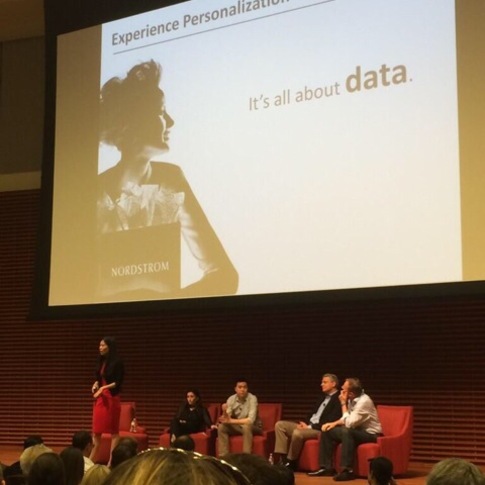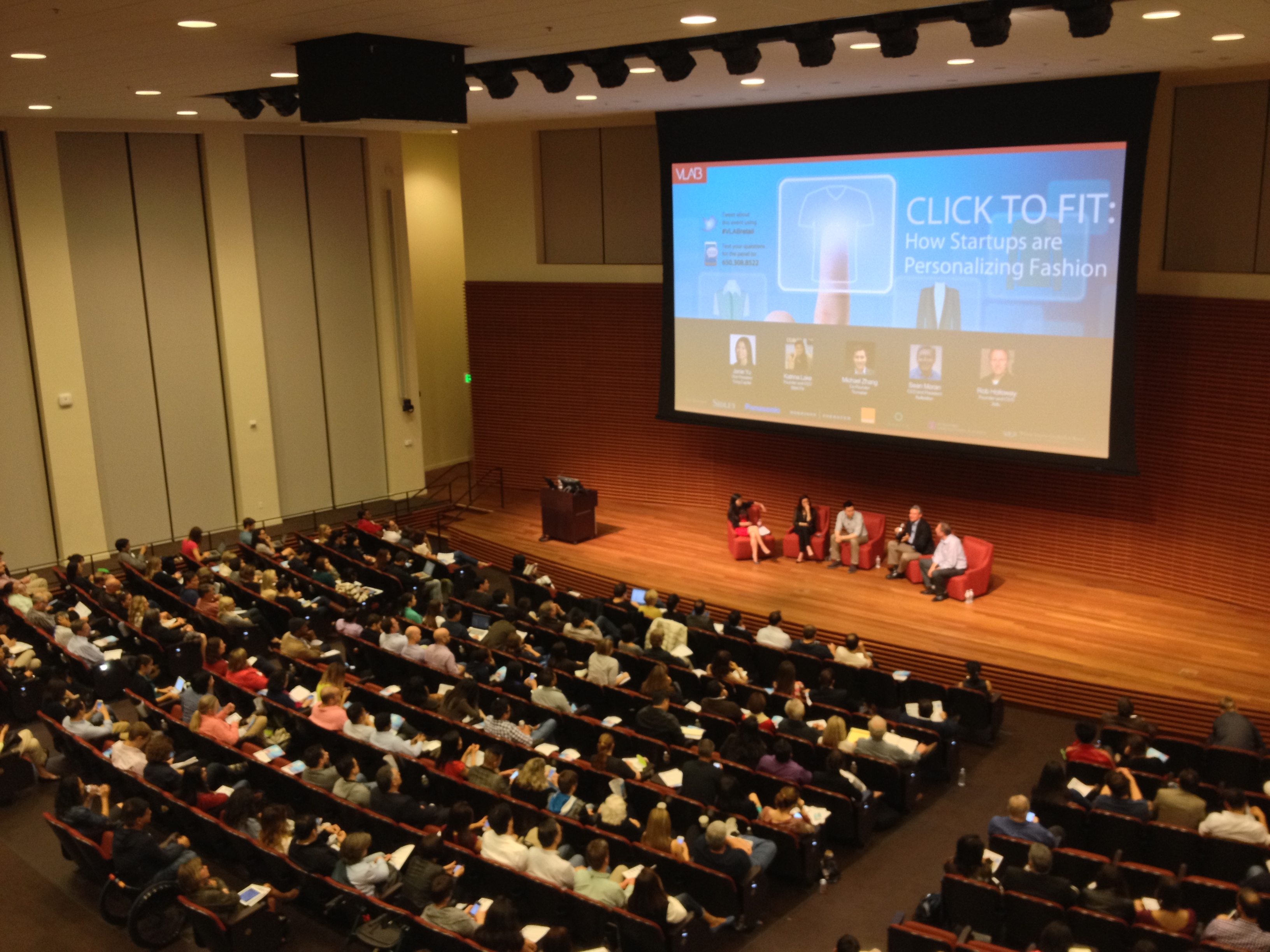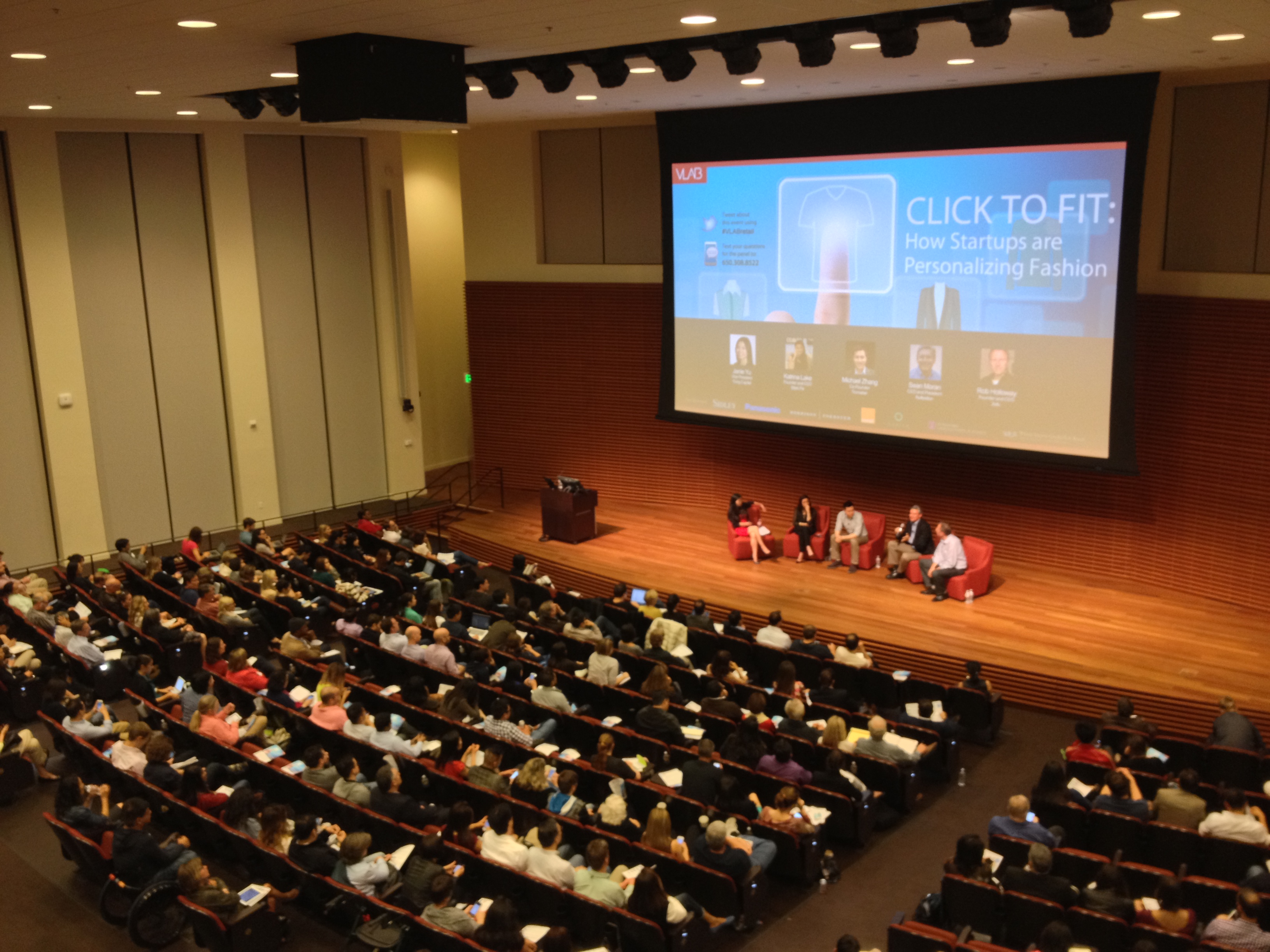Scalable Fashion and Personalization. What is personalization?
Fabric? Check. Tailor? Check. Fashion, particularly men’s fashion, started out highly personalized. After choosing fabric from a vast selection, the clothes were tailored to a perfect fit, after which personalized changes could be made to the design before the product was hand delivered. By the late 18th century, clothes started becoming machine made, and by the 20th century, personalization was a long lost thought, with a focus on efficiency. In our efforts as a civilization to streamline the process, we somehow lost the individuality along the way.
 But as the esteemed moderator, Janie Yu (Fung Capital Vice President), pointed out, we now, have come a full circle, from mass production of clothing to scalable fashion, where designs and designers have used the vast pool of data collected in this digital age.
But as the esteemed moderator, Janie Yu (Fung Capital Vice President), pointed out, we now, have come a full circle, from mass production of clothing to scalable fashion, where designs and designers have used the vast pool of data collected in this digital age.
“Everyone wants customization, but doesn’t want to go through the hassle of customization.” – Rob Holloway
Rob Holloway, while President of Levi’s US, worked with Levi’s on their custom jeans branch. Everyone wanted customization and trusted the brand Levi’s cultivated, but didn’t want to go through the hassle of obtaining customized jeans. Levi’s was able to use data gathered from customers to outsource the project, thereby limiting the real estate and staff costs, to create a lower price point for the customized jeans. Since then, Rob has branched out from dealing with products to now using the data to help customers find products they are interested in. As Rob, CEO and Founder of Zafu pointed out, low consumer demand in the customization department is a great challenge the fashion industry faces. However, the benefits are more than rewarding. With personalization, each item is made to fit the the customers needs and likes, ensuring a low return rate. The challenges are indeed big, but the opportunities are massive. By 2018, Janie Yu predicts the Global apparel and footwear market will exceed 2 trillion. There is nothing but open opportunities ahead.
“The trick is to find the data, the veins that actually make a difference.” – Sean Moran
As stated by Sean Moran, CEO and President of Reflektion, there is a lot of data present in the social world, but it is important to pool the data and focus on what really matters to avoid running into dead ends. From early in his career, Sean Moran was focused on the tech side of the retail industry. While efficiency used to be the primary focus of the retail industry, personalization has become the new target. With his company Reflektion, he is essentially using data to reflect the true nature of large retailers’ clients. For larger brands and retailers, it is harder to personalize, innovate and use new technologies. Hence, Reflektion is using the terabytes of data to discover trends of what customers are truly interested in. The company is using the massive amounts of data collected by retailers and running simulations to find what clients are truly interested in. Combining predictive analytics with demand is really important and shaping the flow of industry. Beyond the realm of personalization, we will soon see a huge wave of data analytics being used to shape the industry. There are so many facets of big complex businesses that can change the industry.
 “Customer centricity is important.” – Katrina Lake
“Customer centricity is important.” – Katrina Lake
Katrina Lake, Founder and CEO of Stitch Fix, is an early pioneer taking hold of the opportunities. As in the retail business, her business focuses on buying wholesale and selling retail. However through use of algorithms, her company has created a massive database. Based on user surveys and collected data, the company’s unique algorithms remove the fuzzy portion fashion, much as Pandora does for music, to figure out important attributes to truly deliver products in a scalable fashion. In this way, the company is one of a kind. They are currently the only company that uses technology and algorithms to create a huge data set to allow for personalization while selling at retail price. To get an accurate data set, the company relies on explicit data from customers, only asking relevant question and accessing pertinent social medias such as Pinterest. By providing an individualized experience with minimal excess personal information being asked of the customers, Stitch Fix is able to build the trust and brand, to cultivate a long lasting relationship.
“Brand and value are so important” – Michael Zhang
Michael Zhang, co-founded his company Trumaker based on his own personal experiences. He bought custom-made clothing during a business trip to China and enjoyed the fit and results of customizing his own clothing, but thought the process could be improved. While he was impressed by the outcome of the customization, he was put off by the product experience, with long wait times for the product and cheap quality. So he formed Trumaker to outfit men with personalized, well fitting clothing of superior quality. When it comes to clothing, men especially will share explicit data to avoid shopping. Trumaker, like Stitch Fix, uses their own algorithms and technology to incorporate trends based on data and information obtained from stylists to provide the best fit for their customers. By advertising their clothing as “Built to Fit” rather than “custom” the negative connotation associated with custom is removed. Rather the high quality, individuality, and reusability of the company’s products are emphasized.
“Challenge the notion that what exists can’t be better” – Sean Moran
The panelists all had valuable final thoughts to share to those starting a new business, particularly in the fashion industry. The main goal is to identify the problem you are trying to solve for the customer. In term’s of men’s fashion, men’s apparel has not seen new ideas emerge in the last five years that have clicked. The market is largely controlled by women, so it is important to change the focus. From a larger standpoint, personalization is different to different people. While looking to the past is a good basis for discovery, it is important to look at the past hour, the current moment and the future to predict what will happen as the market is quickly evolving. It is important to use data to improve the shopping experience for customers while creating a better revenue for retailers. But most important of all, it is necessary to challenge the status quo, to take a problem and change it into a business model.
(Written by Dipti Kanthilal, VLAB Marketing Committee Blogger. Dipti is a National Science Foundation GK-12 Fellow at Santa Clara University.)

